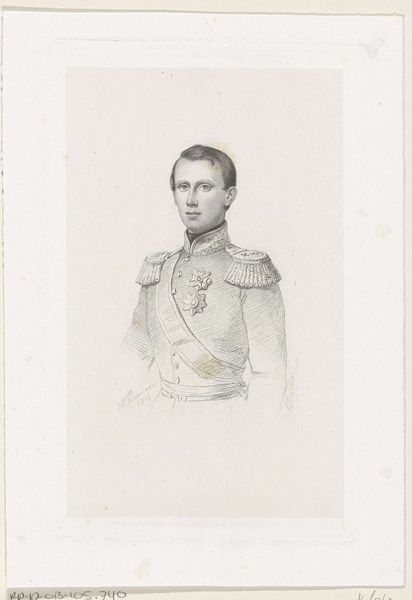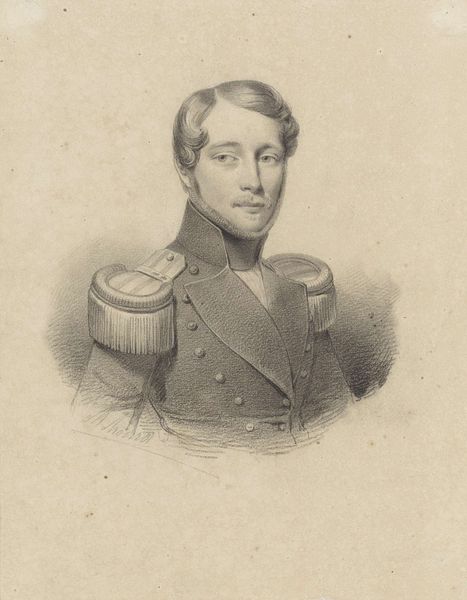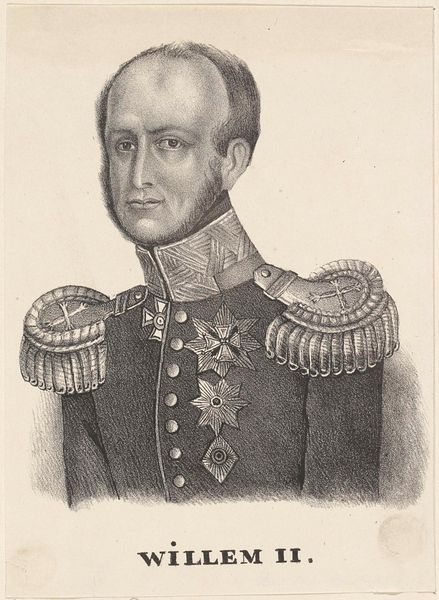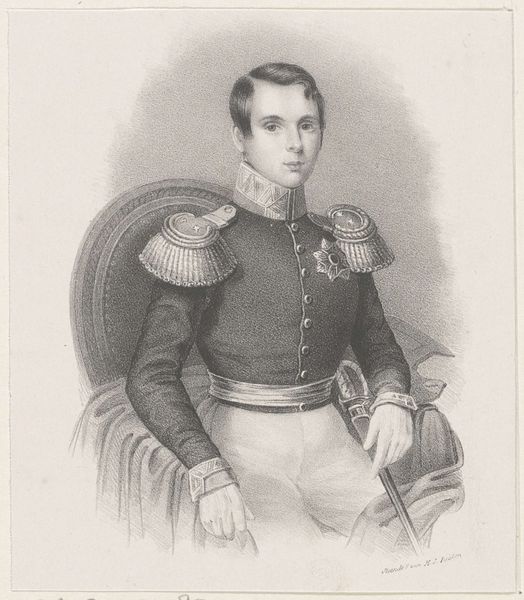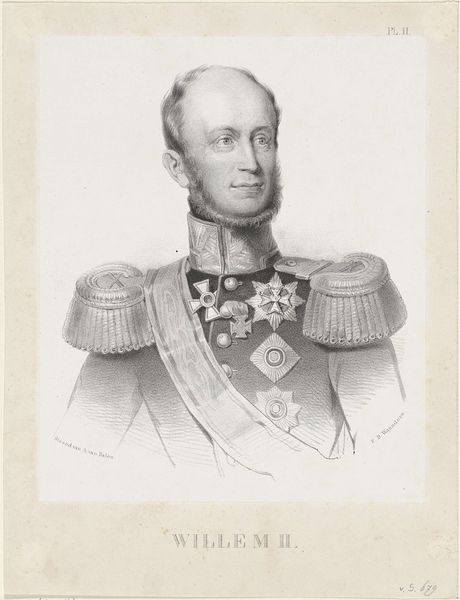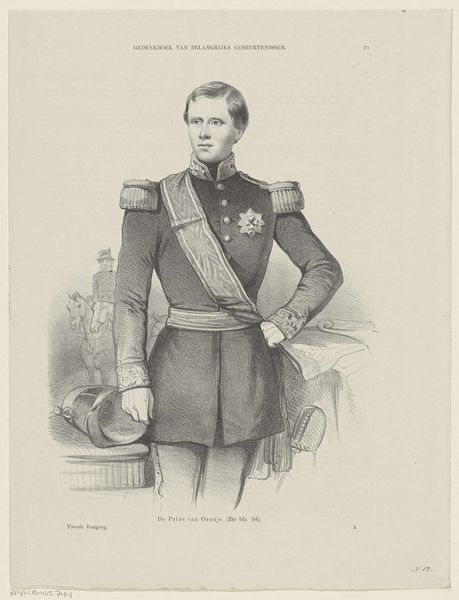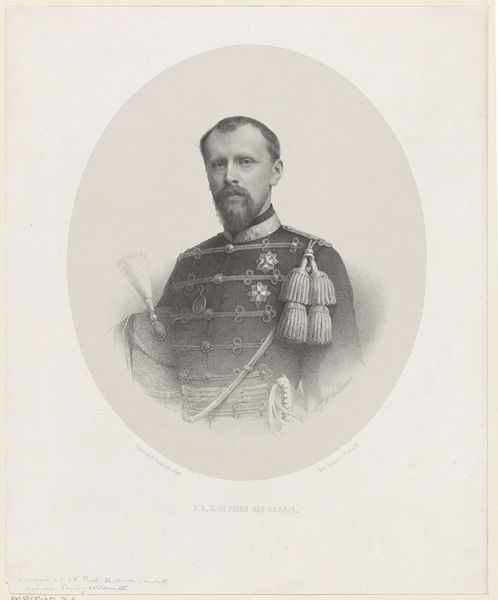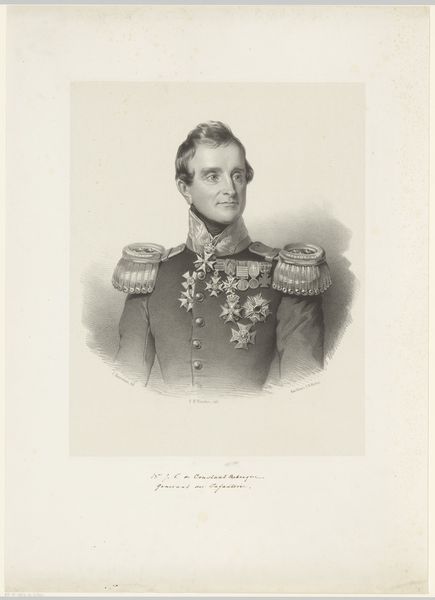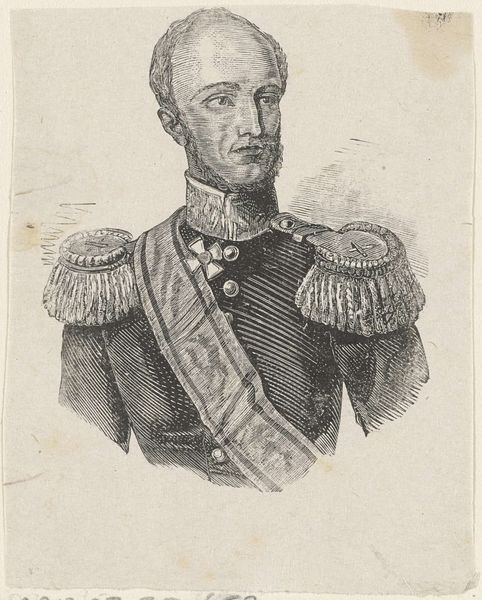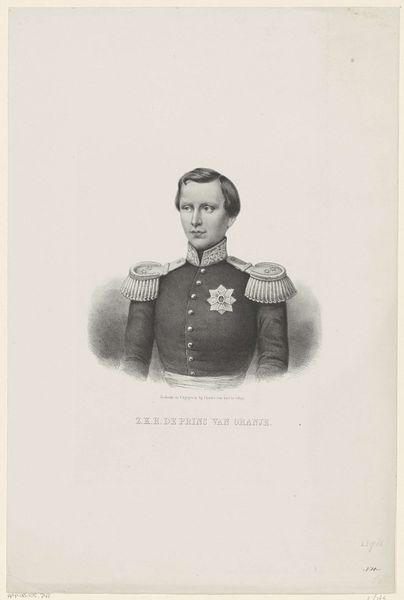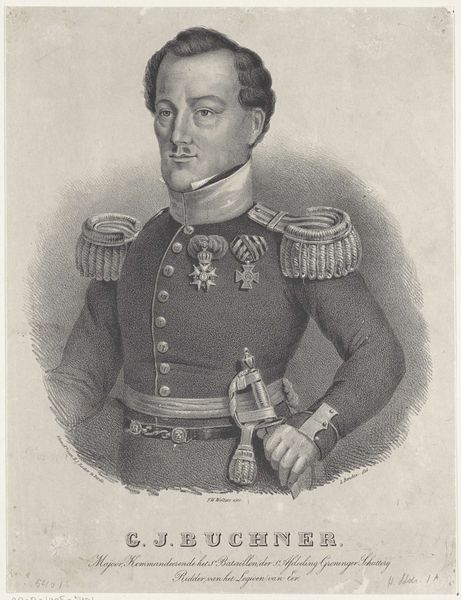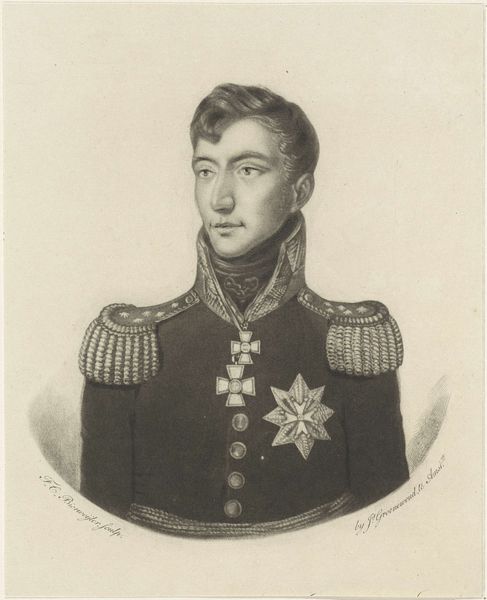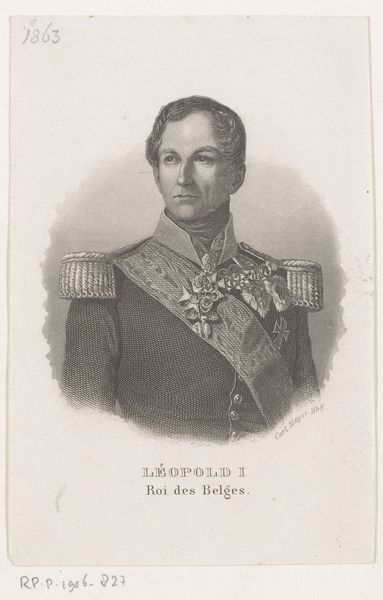
Dimensions: height 225 mm, width 165 mm
Copyright: Rijks Museum: Open Domain
Curator: Here we have Nicolaas Pieneman’s “Portret van Willem, erfprins der Nederlanden,” a pencil drawing created in 1858. It's part of the Rijksmuseum collection. Editor: The delicate lines create an immediate impression of youthful solemnity. There’s something about the way light catches the prince’s face, almost an apprehension, despite the rigid formality of the uniform. Curator: Absolutely. Think about the context of 1858. While it appears traditional on the surface, we need to consider how such a carefully constructed image would serve the role of the monarchy, solidifying its image. The sitter would later become King William III of the Netherlands. This portrait aims for legitimacy through familiar visual language, in times of intense cultural change. Editor: I'm particularly interested in how Pieneman balances the precision required of official portraiture with elements of Romanticism. You can sense it not only in the subject’s expression, but also in the fluidity of the drawing technique itself, visible particularly in the sketch-like quality of the coat's edges and overall tonality. How does it reflect evolving gender roles or societal norms in that period? Curator: The drawing also showcases the artist's ability to handle details with incredible accuracy. You can see the intricacies of the uniform, the delicate shading, which demonstrates not just skill but the political power embodied in those details, reinforcing hierarchical systems through representation. We must also not forget the Romanticized image of leaders, prevalent throughout the 19th century, contributing to a sense of almost otherworldly importance. Editor: Perhaps the tension comes from that interplay - the very earthly constraints of power communicated through an ethereal technique. It feels both real and removed. I wonder about the intended audience. It has the appearance of being accessible but is so much more. Curator: And thinking about its display within the Rijksmuseum today, what conversations can this single portrait spark about representation, power dynamics, and national identity, for contemporary viewers? Editor: For me, Pieneman’s portrait resonates precisely because it layers complexity beneath seeming simplicity. It encourages viewers to consider not just what is shown, but what is carefully constructed. Curator: I concur. It is amazing how, through Pieneman’s masterful use of pencil, so much could be subtly suggested about Dutch royalty and its ongoing performance.
Comments
No comments
Be the first to comment and join the conversation on the ultimate creative platform.
